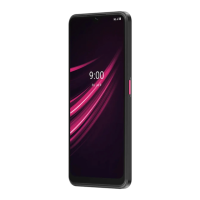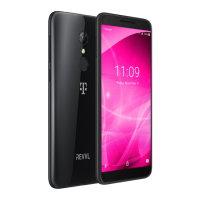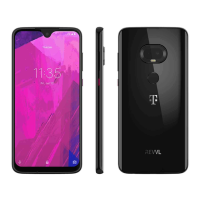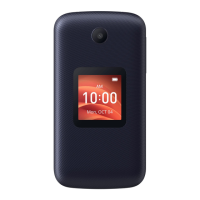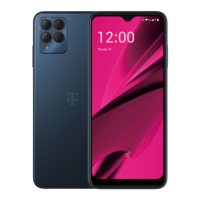43 44
It is the user’s sole responsibility to ensure that prior authorization be obtained, if necessary, in order to
recordprivateorcondentialconversationsortakeaphotographofanotherperson;themanufacturer,the
seller or vendor of your mobile device (including the operator) disclaim any liability which may result from
the improper use of the mobile device.
LEGAL INFORMATION
In order to provide you with better access to this important information, we've made the materials
accessible from the phone's Settings menu. Review these materials prior to using your mobile device. To
access the materials on your mobile device, swipe up from the home screen, and tap Settings > About
phone > Legal information, and select a topic.
REGULATORY INFORMATION (E-LABEL)
Your mobile device uses an electronic label (e-label) that provides regulatory information about your
device. To view the regulatory information (such as FCC ID) for this device, on the device, swipe up from
the home screen, then tap Settings > About phone > Regulatory & safety.
FCC COMPLIANCE
Any changes or modifications not expressly approved by the party responsible for compliance of this
device voids the user's authority to operate this device.
This device complies with Part 15 of the FCC Rules. Operation is subject to the following two conditions:
(1) This device may not cause harmful interference
(2) This device must accept any interference received, including interference that may cause undesired
operation.
This equipment has been tested and found to comply with the limits for a Class B digital device, pursuant
to Part 15 of the FCC Rules. These limits are designed to provide reasonable protection against harmful
interference in a residential installation. This equipment generates, uses and can radiate radio frequency
energy and, if not installed and used in accordance with the instructions, may cause harmful interference
to radio communications. However, there is no guarantee that interference will not occur in a particular
installation. If this equipment does cause harmful interference to radio or television reception, which
can be determined by turning the equipment off and on, the user is encouraged to try to correct the
interference by one or more of the following measures:
• Reorient or relocate the receiving antenna.
• Increase the separation between the equipment and receiver.
• Connect the equipment into an outlet on a circuit different from that to which the receiver is connected.
• Consult the dealer or an experienced radio/TV technician for help.
HEARING AID COMPATIBILITY (HAC)
The FCC has established requirements for digital wireless mobile devices to be compatible with hearing
aids and other assistive hearing devices.
When wireless devices are used near hearing devices (such as hearing aids and cochlear implants), users
may detect a buzzing, humming, or whining noise. Some hearing devices are more immune than others
to this interference, and wireless devices also vary in the amount of interference that they generate.
The wireless telephone industry has developed ratings to assist hearing device users in finding wireless
devices that may be compatible with their hearing devices. Not all wireless devices have been rated.
Wireless devices that are rated will have the rating displayed on the box together with other relevant
approval markings.
The ratings are not guarantees. Results will vary depending on the user’s hearing device and hearing
loss. If your hearing device is vulnerable to interference, you may not be able to use a rated wireless
device successfully. Consulting with your hearing health professional and testing the wireless device with
your hearing device is the best way to evaluate it for your personal needs.
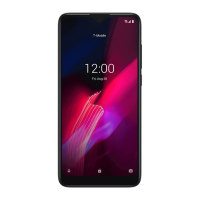
